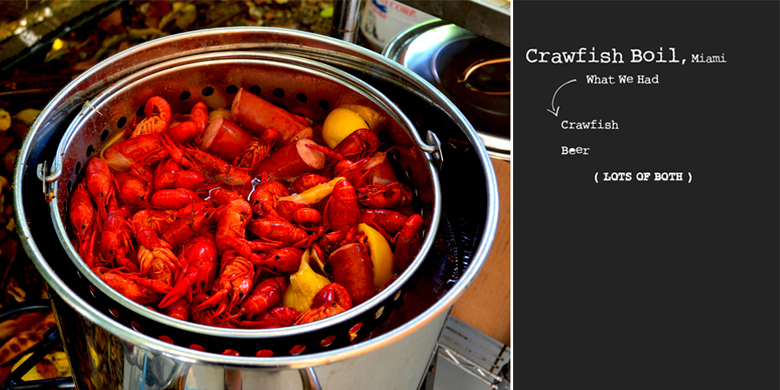Pollos y Jarras
Downtown Miami has seen a resurgence in recent years; an influx of residents has enlivened the streets. As a result, more and more new businesses are popping-up. Although spotty, these new restaurants, pubs, and shops have led the way in reshaping Downtown. Chef Juan Chipoco was one of the pioneers with his widely hyped Cvi.Che 105, which started out small and expanded after gaining popularity. Next door, the also Peruvian inspired, Pollos y Jarras marks his second restaurant opening on the same block.
Downtown Miami has seen a resurgence in recent years; an influx of residents has enlivened the streets. As a result, more and more new businesses are popping-up. Although spotty, these new restaurants, pubs, and shops have led the way in reshaping Downtown. Chef Juan Chipoco was one of the pioneers with his widely hyped Cvi.Che 105, which started out small and expanded after gaining popularity. Next door, the also Peruvian inspired, Pollos y Jarras marks his second restaurant opening on the same block.
This time, Chipoco has rehabbed a small stand-alone, two-story building that had been an eye-sore and commercial disaster for years. The building now looks great, complemented by outdoor seating and the tucked away Wazzka Lounge (previously a loading area adjacent to the building); making for an active night time retreat in an otherwise dingy street. Inside the restaurant, the décor is casual, yet trendy: concrete, brick, and wood accentuate the lofty feel; while arte chincha posters cleverly drape the walls. The ground floor features an order counter, wrap-around bar top with stools and full bar in the back. In concept, this is an appealing configuration for a downtown establishment; but in a city like Miami where casual bar top dining hasn’t caught on, the always empty space might give passersby a bad impression. After a short elevator ride with the hostess and a larger than life neon image of Chipoco, you arrive at the main dining space, which on this day, during the soft opening, was buzzing with waiters.
Despite the simplicity implied by its name, the menu is quite extensive; appetizers, sandwiches, soups and salads, grilled meats of all kind, sides, and desserts. The colorful names and adjective laden descriptions turn a tour through the menu into a tour of Peru; quirky, but sometimes cumbersome when deciphering your order. In our case, since the soft opening offered a limited menu, our waiter suggested a sampling for the table; and a sampling we got! It began with a courtesy Aguadito de Pollo, a light and flavorful chicken soup with finely chopped cilantro, chunks of vegetables, and chicken; a pleasant way to begin the meal.
This was followed by a series of apps: Anticuchos de Res con Choclo (Grilled Beef Heart), Salchiyuca (Sausage and Fried Yuca Sticks), and Yuca Frita con salsa Huancaina (Fried Yuca Sticks). Unfortunately, the Anticuchos de Res were a disappointment; although well seasoned, they were tougher and gamier than customary. The Salchiyuca and Yuca Frita, on the other hand, were tasty and nicely presented in mini fry baskets. The yuca fries, however, were shaped from puree instead of the traditional yuca chunks.
The main course was led by the house specialty, Pollo a la Brasa (Rotisserie Chicken), the meat was juicy and tender, the skin nicely charred, but the seasoning seemed to overpower the pureness of the charcoal grill. This was followed by a savory Skirt Steak that would have been perfect had it been served medium instead of well done; but we were never asked. The entrees were complemented with Arroz Chaufa (Peruvian Fried Rice), which was good, but probably better without chicken bone fragments; a chef’s salad; Camote Frito (Sweet Potato Fries) sprinkled with sugar and absolutely delicious; and crunchy french fries.
While service was good there are definite kinks to work out in the food. The price of the meal was reasonable considering the portions, but having seen the prices on the menu, Pollos y Jarras is not exactly inexpensive, and instead seems to be building on the hype of its predecessor. In spite of this, we’re hoping Chipoco works out the kinks by the time the full menu kicks in.













